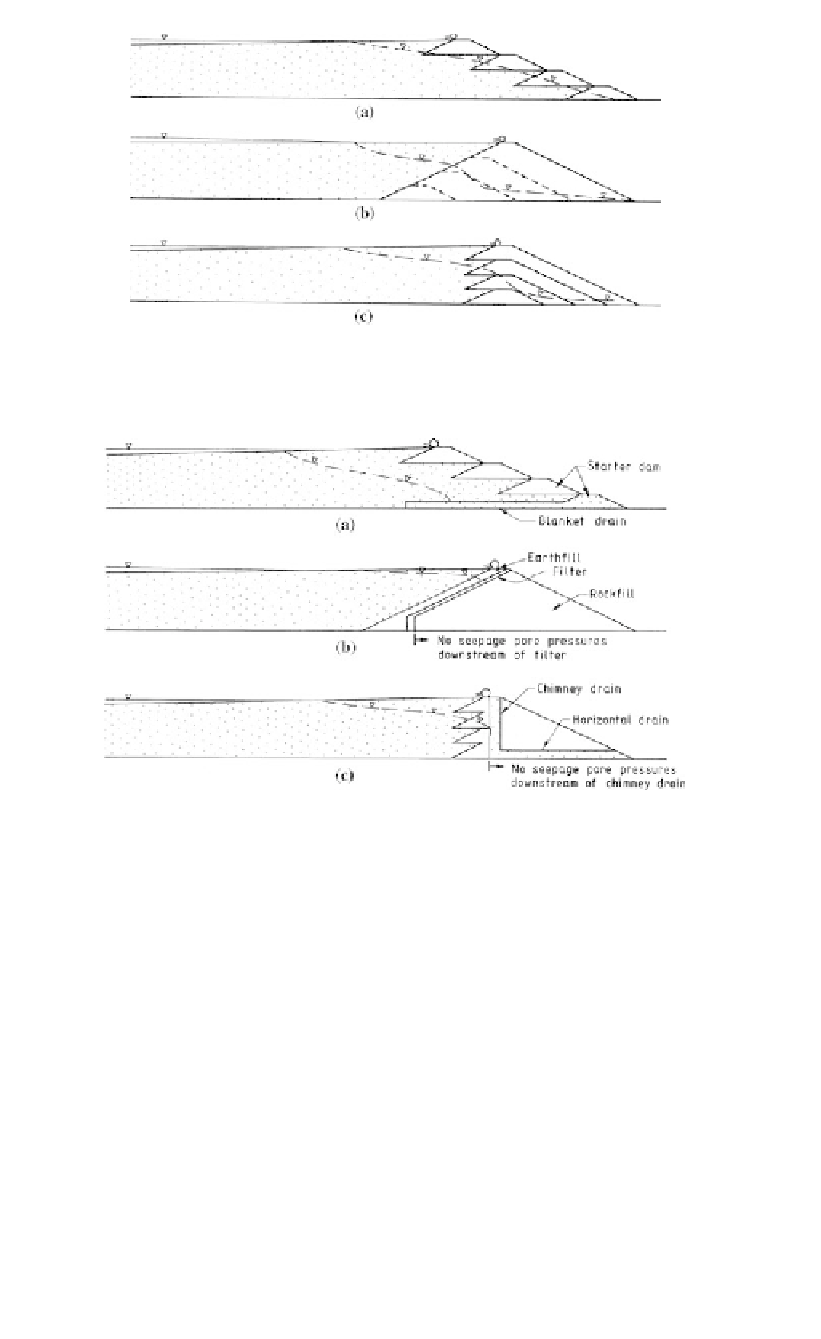Environmental Engineering Reference
In-Depth Information
Figure 19.25.
Internal seepage: (a) upstream embankment; (b) downstream embankment; (c) centreline
embankment.
Figure 19.26.
Use of internal drainage zones in embankments: (a) upstream embankment using starter dam
with upstream blanket drain; (b) downstream embankment; (c) centreline embankment with
vertical chimney drain.
In many designs, drainage zones will be incorporated into the design, within the
embankment, as shown in
Figure 19.28
.
19.5.5.2
Drainage blankets and underdrains
Drainage blankets as shown in Figure 19.26(a) and
Figure 19.30
and underdrains as
and to collect contaminated seepage into a seepage collection system.
These drains have in the past often been built with mine waste, tailings or borrow
pit run materials, without due regard for filter design between the tailings and the drain
or sufficient discharge capacity and they have not functioned as desired. In any case,
where the tailings are layered, with slimes or finer tailings between the sandy tailings,
the water will perch on these low permeability strata and the drains will not be very
effective.
The other point to remember, is that the foundation is often more permeable than the
tailings, so the seepage may be vertically downwards without the underdrains, in which
case they provide no benefit in reducing pore pressures.

